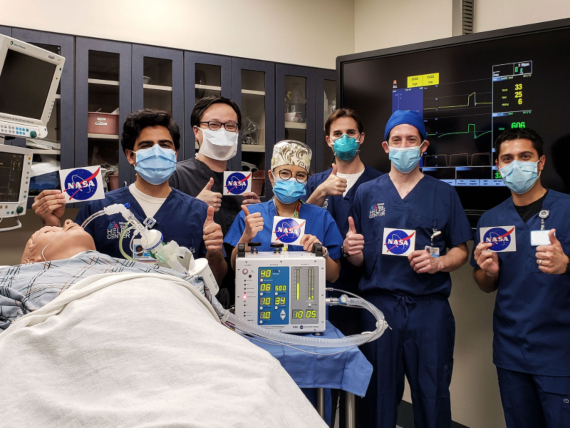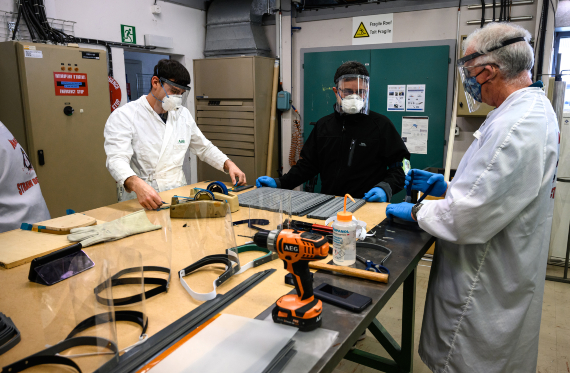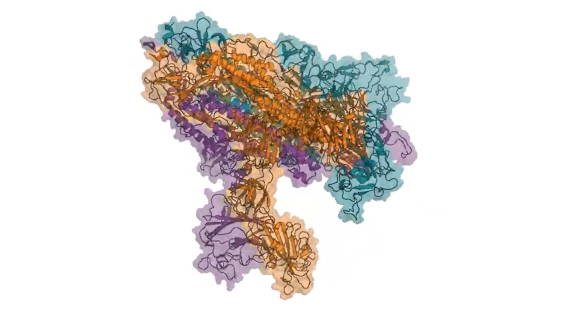On March 27, Seth Berkely, CEO of Gavi, the Vaccine Alliance, launched an appeal in Science magazine: “COVID-19 needs a big science approach,” he wrote, stressing that the scientific battle against the SARS-CoV-2 coronavirus “requires multilateral collaboration on an unprecedented scale.” However, political interests have attempted to restrict cooperation to the national level, such as Donald Trump’s Operation Warp Speed, which Bloomberg has equated with the Manhattan Project; the first version of Berkley’s article included references to that historical example, which were later removed. But for science, global collaboration is something that already exists at its very core, and that is manifesting itself in a brilliant and exemplary way in the present crisis.
In areas related to the pandemic, researchers are working around the clock to fight the virus. “There is a lot of dedication and lightening of bureaucratic procedures, information flow, reagents, samples…,” says microbiologist and immunologist José Villadangos, from the Peter Doherty Institute for Infection and Immunity at the University of Melbourne (Australia), the first centre to isolate the coronavirus outside China, in a conversation with OpenMind. “A lot of money has been put into starting or scaling up projects on COVID-19,” he adds. Around the world, scientists are sharing thousands of viral genomic sequences and unpublished studies online. Villadangos believes this is an unprecedented global collaboration, which “will be very beneficial.”
Respirator developed by NASA or CERN
But the scientific effort against the pandemic far exceeds the limits of linked laboratories. “With nothing better to do, many groups are racking their brains to find connections between what they normally do and the crisis,” says Villadangos. In many places around the world, research centres have put their PCR machines to use running diagnostic tests for the SARS-CoV-2 virus. In another example, engineers at NASA’s Jet Propulsion Laboratory took just 37 days to develop a respirator called VITAL, specially designed for patients with COVID-19, which has already begun testing at the Icahn School of Medicine at Mount Sinai in New York.

Physicists at the European Laboratory for Particle Physics (CERN) have also teamed up to design a respirator called HEV that will run on batteries and help less seriously ill patients, freeing up hospital machines for the critically ill. CERN is also producing sanitiser gel and 3D printed face shields, and lends its computers to the Folding@home platform, which analyses the virus’ proteins.
Crowdfight COVID-19: 45.000 volunteers
It is not only large research institutions that are contributing their resources to the battle against the virus; individual scientists themselves have also stepped up to the plate. Alfonso Pérez-Escudero investigates the behaviour of tiny worms at the Animal Cognition Research Centre in Toulouse (France), and Sara Arganda studies the interactions of ants at the King Juan Carlos University in Móstoles (Spain). The research field of both scientists is far removed from epidemic viruses, and yet when the pandemic broke out and their laboratories were closed, they realized they could do much more than just stay at home and twiddle their thumbs.

“The idea came up in a conversation between scientific friends,” Arganda and Pérez-Escudero tell OpenMind. “We realized that in the current situation there were many researchers who were going to be at home without being able to continue with our experiments. Given the urgency of finding scientific solutions to the COVID-19 pandemic, we thought that this mass of scientists could contribute something despite working in far removed disciplines.”
With this goal in mind, the two Spanish scientists approached other colleagues from various European institutes until they formed a team of 40 people. Then, with the advice of experts from around the world, they launched Crowdfight COVID-19. This platform aims to put scientists and other professionals who want to contribute their time and expertise in contact with coronavirus research groups that need help. The initiative has been a success: “We have more than 45,000 volunteers,” they say. Half of them come from the fields of biology and biomedicine, but the profiles reach disciplines as diverse as law. The platform has already responded to 72 requests, ranging from testing antivirals or analysing data to finding sources of funding or asking for help to prevent anti-spam filters from blocking emails for volunteer searches.
Science in quarantine
However, there is another side to the coin in terms of the effects of the pandemic on science. Like in other workplaces, countless research institutes around the world have had to shutter their doors. With the exceptions of COVID-19 research and other projects considered essential, science is also in quarantine: “All the laboratories have shut since the confinement was declared at the end of March,” says Villadangos from Australia, a country that is not among the hardest hit by the pandemic. “It’s a disaster because all research is essential, especially biomedical research, even though most of it doesn’t seem to be directly related to COVID-19.” The immunologist fears that this drastic reduction in scientific capacity will undermine projects and the attraction of foreign talent. “Continued isolation in the medium to long term is going to do considerable damage.”

“This has forced us to shut down experiments, and starting up again will be complicated,” José Miguel Mulet, a researcher at the Institute of Molecular and Cellular Biology of Plants in Valencia, Spain, one of the countries most affected by the coronavirus, told OpenMind. “There are long projects, so if you stop for a month and a half you have to start again.” The biotechnologist fears that the crisis will affect science funding even more: “Dark times are coming,” he concludes.
Comments on this publication